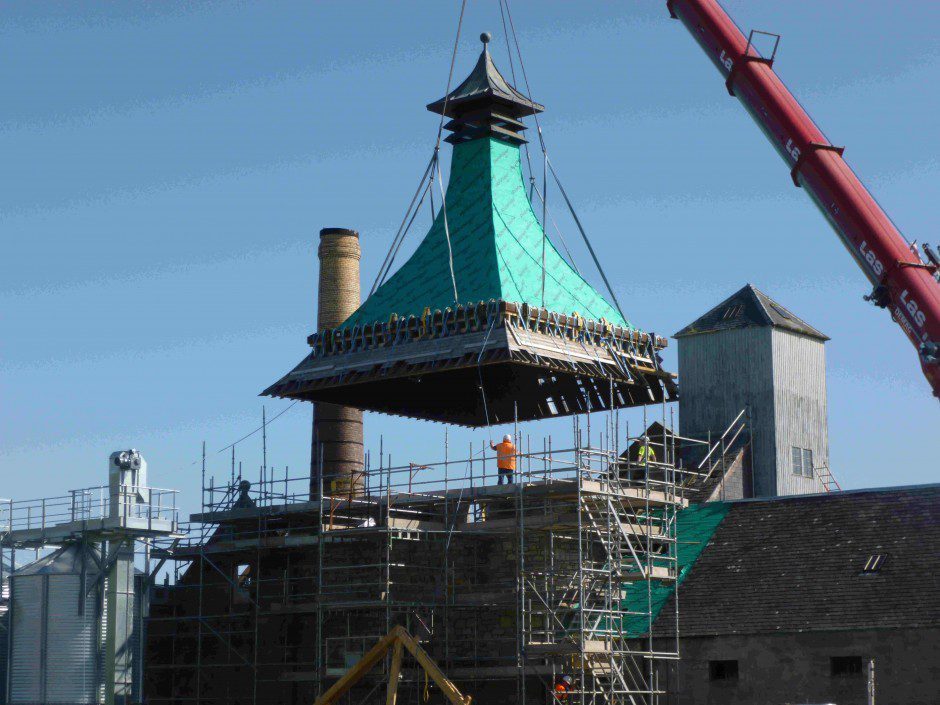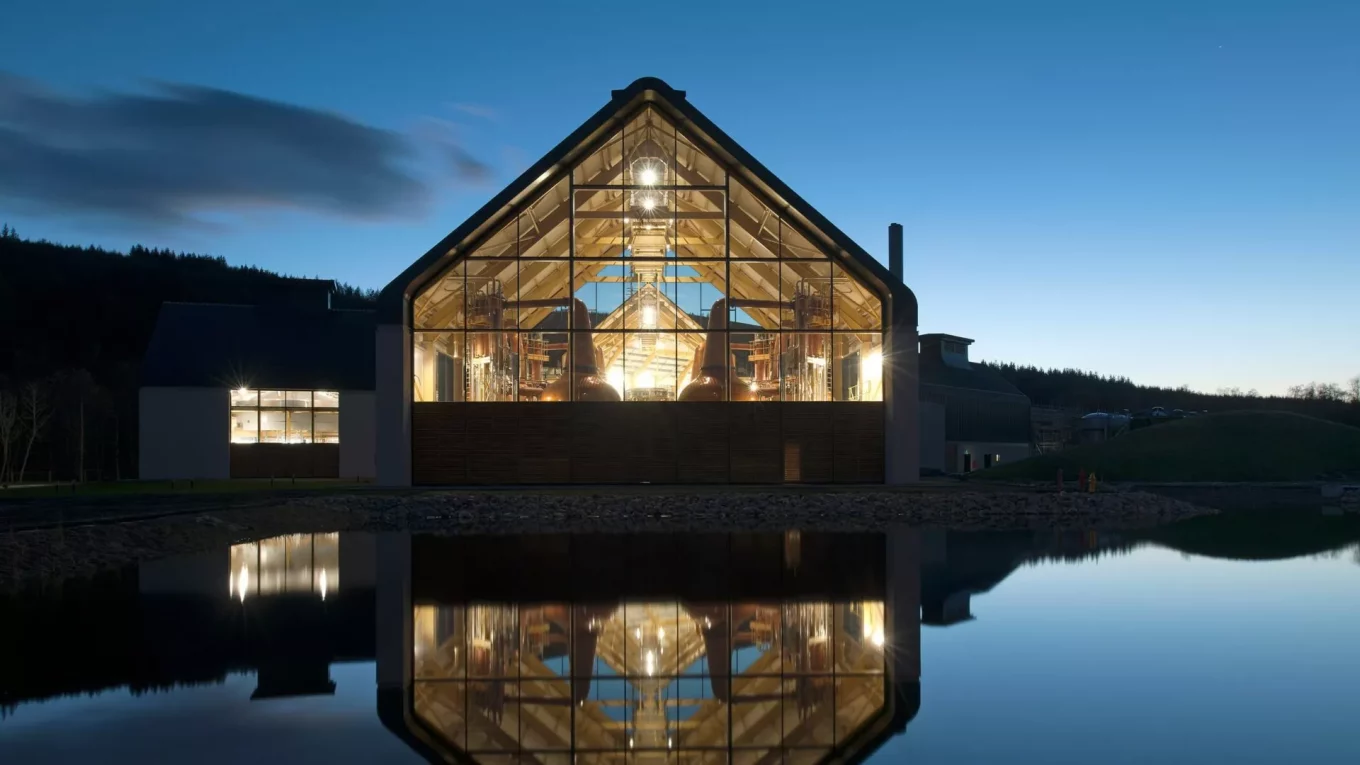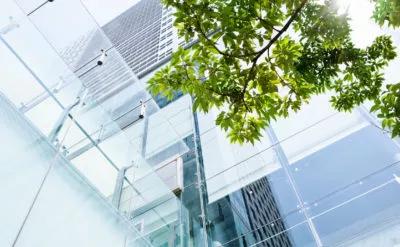“Today’s rain is tomorrow’s whisky.” It is a Scottish proverb about the weather, inherent optimism, and national spirit. But as Scotland’s Scotch Whisky Association vows to achieve net zero emissions by 2040 in all local operations, this proverb takes on new meaning – the reality of changing weather patterns due to climate change and the confidence in commercial distilleries to meet sustainability targets.
The Association’s Strategy covers four main themes (tackling climate change, using water responsibly, moving to a circular economy, caring for the land) and commits the industry to work collaboratively with supply chain partners and government towards a collective goal of a sustainable dram from grain to glass.
In this Insight Article, Mark Fresson, our resident scotch distillery subject matter expert, looks at the design considerations from past and present regeneration projects in melding guaranteed age with a guaranteed future.
An industry tackling climate crisis
Whisky is a distilled alcoholic beverage made from fermented grain mash. By law, Scotch Whisky can only be made in Scotland using water, yeast and cereals. It is distilled in copper pots and matured in oak casks for a minimum of three years and often over a decade. Scotch whisky production dates back to 1494 and is a source of commerce with iconic brands and tourism showcasing advanced craftsmanship.
No two whisky distilleries in Scotland are the same, just as every Scotch whisky has its own character and taste based on local landscapes, water sources, and even the shape of copper stills.
Tackling the climate crisis as an industry and mandating net zero emissions by 2040 is as much about preserving the past as securing the future. Scotland’s Scotch Whisky Association’s commitment to Goals #7 and #13 of the UN Sustainable Development Goals, specifically climate action and affordable and clean energy, means reducing the sector’s carbon footprint in its operations by an additional 40% before 2030. Incredibly, the industry that produces what George Bernard Shaw coined “liquid sunshine” is also ahead of schedule.
Generating heat for distillation is the primary problem in creating harmful emissions. The solution combines increasing efficiency of the process and the use of alternative technologies such as anaerobic digestion, biomass, hydrogen, high-temperature heat pumps, and decarbonizing operations through carbon capture.
- Sustainable design
Today, more and more distilleries are employing newly designed bio plants and high-efficiency Mechanical Vapour Recompression (MVR) fan technology for pot distillation. This technology compresses vapor to rise in temperature before being sent back to heat the stills during distillation. It is proving to be highly effective to control energy consumption.
Just as critical is the regeneration of existing buildings. Regeneration reuses existing materials to expand the lifespan of the original carbon footprint. Every effort is made to renovate and reuse buildings and materials to make them more efficient and reduce energy consumption – while realizing improvements to the visual character of the distillery and strengthening the brand. The trick is to maintain production while this regeneration process is carried out with an end goal for greater whisky production capacity. Old and often redundant stone structures can be reused and repurposed as new process buildings, such as stillhouses or visitor buildings – all part of a strategy of continuing production during the regeneration and renovations.
For example:
- One project reused the original stone to create the new stillhouse and turned an old dairy into a new blending room
- Another project reuses an original redundant building, which is buried behind later, less attractive concrete buildings. On completion of the fit out the original building, the later concrete buildings will be cleared away thereby exposing the original restored building to pride of place.
- A third, which last produced scotch in 1983, preserved the original kiln roof by craning it off, repairing it on the ground, and placing it back on re-stabilized stone walls

- Leveraging environmental landscape
Lush glens, dense forests, dramatic mountains and inspiring coastlines surround and elevate beautiful Scottish distilleries. But even the finest locations can have complex design challenges. Our design team considers a number of elements at the start of every new project:
- Is there sufficient water for processing and cooling, such as access to a local river? Is the water volume consistent all year-round to meet production targets?
- What is the extent of the proposed process? Is the desire to malt grain or will it be brought in from another source? Where will the product be housed as it matures, will it be matured onsite or taken offsite to mature elsewhere? What energy sources will be used to support the production process?
- Is the site under special protection or legislative restrictions? For example, a site within a natural park needs additional consideration of the ecological and light pollution impacts.
- Is tourist attraction part of the business goal in addition to whisky production? Distillery visitor centers can be used to create a memorable visitor experience to help increase brand recognition and sales.
At the Dalmunach Distillery, named after the nearby pool in the River Spey, the surrounding landscape was used as design inspiration. Three linear buildings are arranged like a sheaf of barley in front of a pond, explicitly used for mashing, fermenting and distilling. The cluster keeps the process on a human scale while still meeting demand.
- Key considerations and community impact
Agreement on the process, the type of fuel to be used and the desired character of the end product are some of the key design considerations and decisions that need to be ironed out with process engineers, consultants, and internal client departments early in the design to achieve the desired outcome.
If a site is within a specific regulatory climate, all documents ranging from environmental assessments to ecological reviews must be identified and built into the overall project timeline.
The distillery project team should be sensitive to possible concerns from the community related to noise, smell, traffic, and other disturbances, and should be engaged as early as possible to allow the design to minimize any concerns.
- Inspiration to the United States and Canada
Scotland offers a wealth of inspiration for North American Whiskey distilleries, which are also trying to advance sustainability targets and address this energy-intensive industry. In the United States and Canada, major brands are looking at everything from how to move raw ingredients long distances more efficiently to ways of supporting a carbon neutral manufacturing process.
For example, some distilleries are growing grain onsite, using spent grain as an alternative fuel source, or restricting grain sourcing to farms less than a mile away. Solar technologies, heat reclamation systems, rainwater collection, and temperature management are all part of holistic design. Innovative partnerships with enhanced supply chain collaborators are also being developed in the US and Canada with universities, distillery bakeries, and local organic producers and farmers.
The Scotch Whisky Association has set the bar for advancing energy and carbon reduction at distilleries in the UK and North America, and at record speed. The integration of old traditions with sustainable design is fundamental and, to this, we raise a glass to the smoky, blended, and smooth – and to supporting their carbon neutral future.
Slàinte mhath.



